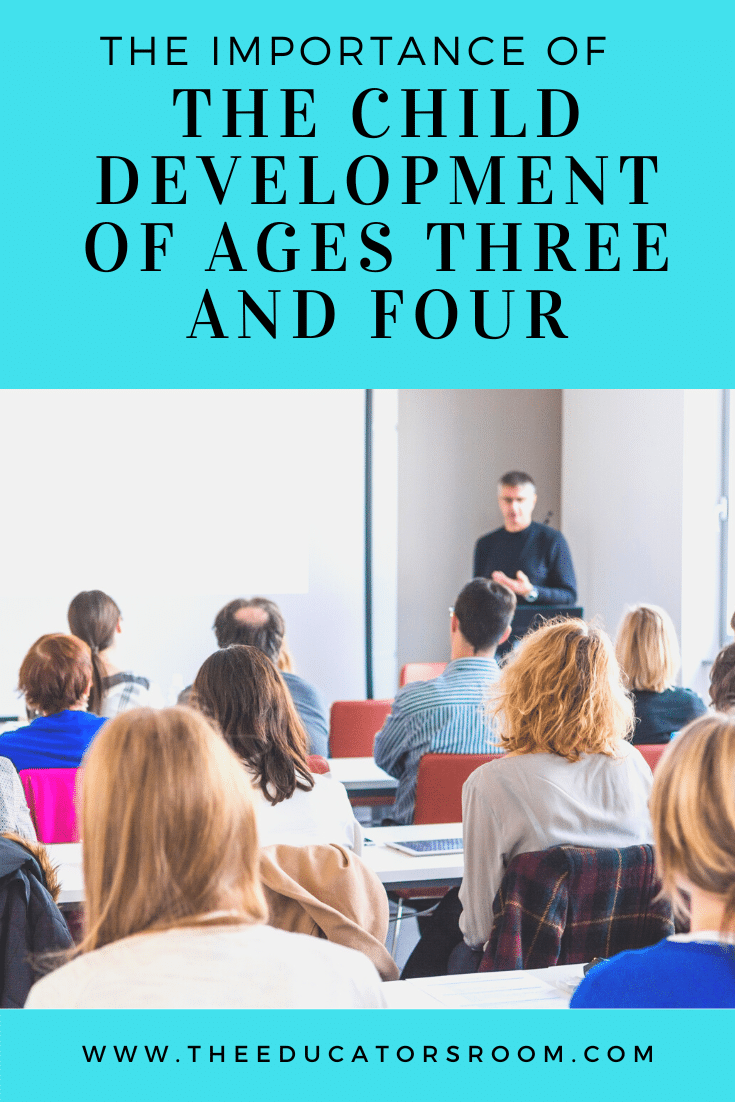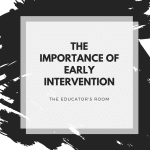Now that we know how important it is to understand the stages of child development, let’s take a look at typical three-year-old and four-year-old child development.
The three-year-old is full of wonder and spends a lot of time watching, observing, and imitating. Their days are filled with busily exploring their world. Three-year-olds are interested in perfecting motor skills, and it is common for them to spend the entire morning doing the same activity over and over. This behavior is important to later understanding change and consistency. Typical three-year-olds have very little memory for past events and do not usually understand time frames such as yesterday or tomorrow.
The following is typical for three-year-olds:
- talks so that 75 to 80 percent of his speech is understandable
- speaks in complete sentences of 3-5 words.
- stumbles over words sometimes – usually not a sign of stuttering
- enjoys repeating words and sounds
- listens attentively to short stories and books
- likes familiar stories told without any changes in words
- able to tell simple stories from pictures or books
- enjoys singing and can carry a simple tune
- understands “now, soon, and later”
- asks who, what, where, and why
- weight: 25-44 pounds
- needs approximately 1,300 calories daily
- sleeps 10-12 hours at night
- can do some self-maintenance such as dressing and feeding
- Gross motor skills are developing with the use of large balls and chunky toys. Most three-year-olds can throw a ball overhead, kick a ball, hop on one foot, climb up and down playground toys, and walk a straight line heel to toe
- seeks the attention and approval of adults
- sometimes shows a preference for one parent (often the parent of the opposite sex)
- accepts suggestions and follows simple one-step directions
- enjoys helping with simple household tasks
- can make simple choices between two things
- enjoys making others laugh and being silly
- enjoys playing alone but near other children, still has difficulty cooperating and sharing with others though (parallel play)
- spends a great deal of time watching and observing
- enjoys hearing stories about self
- answers whether he is a boy or a girl and can tell his age
- stacks 5-7 blocks
- enjoys playing with clay or play dough (pounds, rolls, and squeezes it)
- can put together a 6-8 piece puzzle
- recognizes common everyday sounds
- matches an object to a picture of that object
- identifies common colors such as red, blue, yellow, green
- can count 2-3 objects
- can solve problems if they are simple, concrete, real, and immediate, and if wants to
- interested in features of animals that make them unique
- has good self-knowledge; can understand the difference between self and younger children, but not between self and older children
Once we understand what three-year olds are capable of, we can help them reach their potential by doing the following:
- Encourage the development of hand-eye coordination by providing large buttons or old beads to string on a shoe lace.
- Play ball – show children how to throw, catch, and kick balls of different sizes.
- Show children how to hop like a rabbit, tiptoe like a bird, waddle like a duck, slither like a snake, and run like a deer.
- Talk frequently with children; use short sentences, ask questions, and listen. Talk about “when you were a baby…”
- Add new information to your children’s sentences. “Yes that’s a flower – it’s a tall, red flower and it smells so good.”
- Teach children to memorize their first and last names.
- Provide books for children to read, and read the same books to them. Read poetry and nursery rhymes. Encourage a child to repeat a story and discuss the ideas and events. Read titles and point to important words on pages, packages, and street signs.
- Encourage interest in reading and writing by sharing a grocery list or note for parents. Provide paper, small notebooks, and markers for use in dramatic play.
- Count objects of interest; for example cookies, cups, napkins, or dolls. When possible, move one at a time as you and the children count. Measure, and have children help measure and count as you follow a recipe.
- Explain why and how things happen with the help of a reference book. Help them do simple science activities like magnetic attraction, freezing water, planting seeds, making a terrarium, and flying kites on a windy day.
- Provide sets – toys and other objects that go together. Discuss similarities and differences. For example, point out sequences in cooking. Let children experiment with faucets, tools, light switches, knobs, latches, and toys that come apart.
- Sing simple songs. Make simple rhythm instruments: oatmeal box or coffee can drums, rattles of dry beans in a box, etc. Encourage a variety of body movements and dance to music of many kinds. Play musical games such as “London Bridge,” “Ring-around-the-Rosie,” and “Farmer in the Dell.”
- Encourage free expression in art projects. Avoid asking “what” children are drawing. Three-year-olds may not know or care, but simply enjoy the process of drawing.
- Talk about colors, numbers, and shapes in your everyday conversation. “We need ONE egg. That’s a RED car. The butter is in this SQUARE box.”
- Ask for help with very simple household tasks such as putting the napkins by each plate, putting socks in the drawer, watering plants, or stirring the muffin batter.
Four-year-olds have moved on to more application and exploration, building on their three-year-old experiences. Four-year-olds are energetic and imaginative. They are often impatient and silly. A four-year-old’s language may range from silly words such as “batty-watty” to profanity. Imagination suddenly becomes greater than life for the four-year-old, who often confuses reality and “make-believe.” Wild stories and exaggerations are common. Four-year-olds love their independence. They show self-confidence and are willing to try new adventures. These kiddos still need to be watched closely as they cannot estimate their own abilities accurately and are capable of trying some outlandish and dangerous tricks. Typical four-year-olds can:
- recognize some letters if taught, and may be able to print own name
- recognizes familiar words in simple books or signs (STOP sign)
- understands the concepts of “tallest, biggest, same, more, on, in, under, and above”
- counts 1-7 objects out loud – but not always in the right order
- understands the order of daily routines (breakfast before lunch, lunch before dinner, dinner before bedtime)
- speaks in fairly complex sentences. “The baby ate the cookie before I could put it on the table.”
- asks a lot of questions, including ones on birth and death
- enjoys singing simple songs, rhymes, and nonsense words
- adapts language to listener’s level of understanding. To baby sister: “Daddy go bye-bye.” To Mother: “Daddy went to the store to buy food.”
- learns name, address, and phone number, if taught
- asks and answers who, what, when, why, and where questions
- continues one activity for 10-15 minutes
- • names 6-8 colors and 3 shapes
- • follows 2 unrelated directions (put your milk on the table and get your coat on)
- • has basic understanding of concepts related to number, size, weight, colors, textures, distance, position, and time
- understands immediate passage of time as in what happened yesterday, but does not understand calendar time
- has long attention span and finishes activities
- understands and remembers own accomplishments
- weight: 27-50 pounds
- height: 37-46 inches
- uses a spoon, fork, and dinner knife skillfully
- needs 10-12 hours sleep each night
- dresses self without much assistance (unzip, unsnap, unbutton clothes;
- lace but not tie shoes)
- can feed self, brush teeth, comb hair, wash, dress, hang up clothes with little assistance
- walks a straight line
- hops on one foot
- pedals and steers a tricycle skillfully
- jumps over objects 5-6 inches high
- runs, jumps, hops, and skips around obstacles with ease
- stacks 10 or more blocks
- forms shapes and objects out of clay or play dough
- threads small beads on a string
- catches, bounces, and throws a ball easily
- likes to gallop, turn somersaults, climb ladders and trees, hop on one
- enjoys playing with other children
- takes turns and shares (most of the time); may still be rather bossy
- seeks out adult approval
- understands and obeys simple rules (most of the time)
- changes the rules of a games as she goes along
- likes to talk and carries on elaborate conversations
- capable of feeling jealous
- persistently asks why
- boastful – enjoys showing off and bragging about possessions
- fearful of the dark and monsters
- begins to understand danger – at times can become quite fearful
- has difficulty separating make-believe from reality
- Lies sometimes to protect self and friends, but doesn’t truly understand the concept of lying – imagination often gets in the way
- may name call, tattle freely
- likes to shock others by using “forbidden” words
- expresses anger verbally rather than physically (most of the time)
- still throws tantrums over minor frustrations
- imitates parent of the same sex, particularly in play
- enjoys pretending, often with imaginary playmates
- Pretending goes far beyond “playing house” to more elaborate settings like the fire station, schools, shoe stores, ice cream shop
- loves to tell jokes that may not make any sense at all to adults
- can feel intense anger and frustration
- has a vivid imagination and sometimes imaginary playmates
- enjoys dramatic play and role-playing
- To help foster the four-year-olds’ development, teachers can:
- Read aloud each day and encourage children to look at books on their own. Provide alternative reading material with a collection of outdated coupons, junk mail, newspaper ads, and old cereal boxes.
- Say nursery rhymes and fingerplays together. Encourage four-year-olds to tell their own stories.
- Encourage interest in writing and words. Provide children with paper and notebooks for writing. Print letters and numerals on the artwork, and label toy shelves with pictures and words that describe objects.
- Provide a variety of art experiences. Make play dough. Create collages from magazine pictures, fabric, wallpaper, and newsprint. Encourage children to experiment with new media like soda straws, string, or yarn. Teach children to mix different colors with paint.
- Teach important number and space concepts. Sort and count everything in sight, like silverware, socks, rocks, leaves, etc. Talk about things being in, on, under, behind, beside, before and after, larger than, too far, etc.
- Teach children the correct use of the telephone.
- Four-year-olds have a strong need to feel important and worthwhile. Praise accomplishments and provide opportunities to experience freedom and independence.
- Teach the use of landmarks to find their way around your neighborhood.
- Encourage physical development. Play follow the leader. Pretend to walk like various animals. Set up an obstacle course indoors with challenges such as crawling, climbing, leaping, balancing, and running across stepping stones. Encourage walking with a beanbag on the head.
- Promote respect for life and living things
- Encourage four-year-olds to help you plan and plant a garden. They will love to water plants daily and will enjoy measuring plant growth.
- Encourage multicultural awareness through representative dolls, puppets, pictures, and books. Encourage cultural aspects of all the families, and learn recipes, songs, and information about cultural celebrations.
- Expand dramatic play by providing a variety of props for themes like the grocery store, pizza parlor, birthday party, and firefighter.







